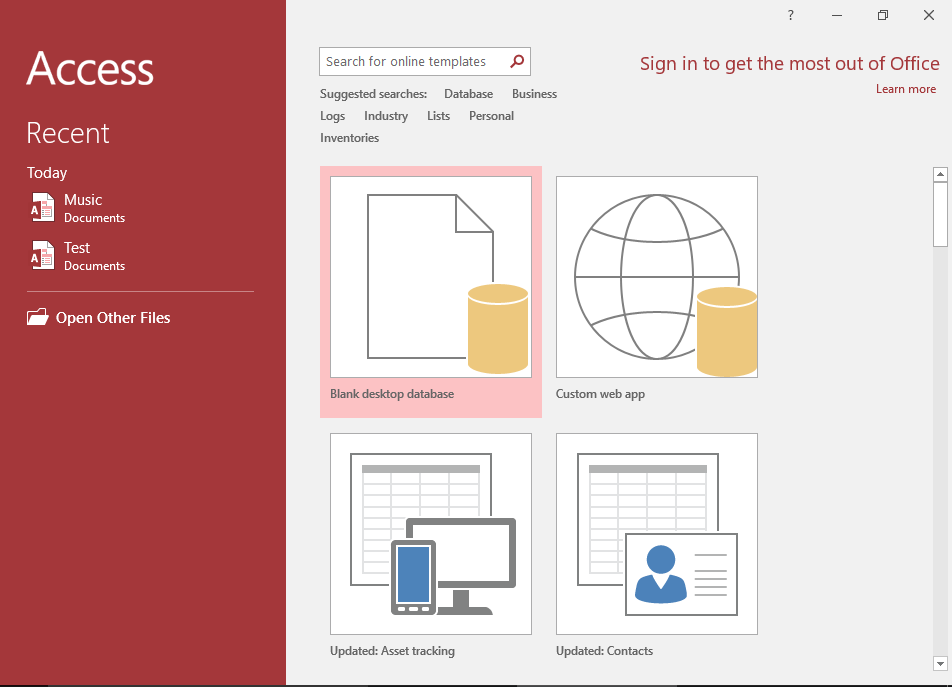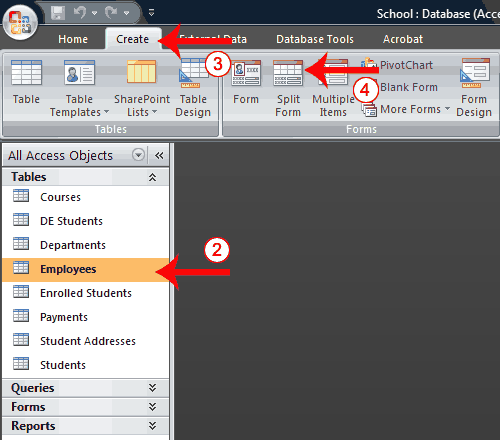Download Microsoft Access 2. Runtime from Official Microsoft Download Center.


Note: There are multiple files available for this download. Once you click on the . If no end- user customization is required (including report modifications), you can choose to distribute those Access 2. Access 2. 01. 3. To do so, you must package and distribute your application with the Access 2.
Runtime. You can freely redistribute it or point users to this download.
What's new in Access 2. What’s new in Access 2.
Microsoft Access Databases Online. Welcome to RPT Software - Microsoft Access Cloud If you are looking for help on how to get your Microsoft Access database working. Free help and tutorials for Microsoft Access. Tips for beginners and database developers. Downloadable examples and utilities. Flaws, bugs, traps, code, design. This article lists the changes in features and functionality between Microsoft Access 2013 and Access 2010. It also describes how the changes might impact your Access.
In a word, apps. An Access web app is a new type of database that you build in Access, then use and share with others as a Share. Point app in a web browser. To build an app, you just select the type of data you want to track (contacts, tasks, projects, and so on). Free Menu Template Adobe Encore Mac. Access creates the database structure, complete with views that let you add and edit data. Navigation and basic commands are built- in, so you can start using your app right away. Tip: To learn how you can get started creating an Access 2. Basic tasks for an Access app or Basic tasks for an Access 2.
To find out more about Microsoft Office, see What’s new in Office 2. Getting started with apps. Building an app. Using your Share.
With RBAC, you don't need to modify and manage access.
Point server or Office 3. Under the hood, Access apps use SQL Server to provide the best performance and data integrity. On the startup screen, click Custom web app. Note: With Access 2. Or, try out a template to create an app, a desktop database, or an Access 2. Table templates. Quickly add tables to your app using pre- designed table templates. If you’re tracking tasks, search for the Tasks template and click it.
If you see the multiple- table indicator next to a template, that means Access will add commonly used related tables for you so you can get started with a truly relational database. How To Download Latest Version Of Adobe Flash Player. Access creates views for each table that display data from related tables. For more information, see Create an Access app, Create an Access app from a template, and Basic tasks for an Access app. External data. Import data from Access desktop databases, Microsoft Excel files, ODBC data sources, text files, and Share. Point lists. For more information, see Import data into an Access database. Opening in a browser.
When you’re done designing, don’t look for a compatibility checker or a Publish button. Your app is already live—just click Launch App. UI created automatically.
Navigation included. Access apps save you the trouble of building views, switchboards and other user interface (UI) elements. Table names show up on the left edge of the window, and the views for each table appear across the top: All apps have a similar navigation structure, making it easier for people to learn and switch between apps. You can always add more custom views besides the ones provided by the app. For more information, see Find data in an Access app. The Action Bar. The built- in views each have an Action Bar with buttons for adding, editing, saving, and deleting items. You can add more buttons to this bar to run any custom macros you build, or you can remove buttons you don’t want people to use.
For more information, see Customize a view by creating a user interface macro and Add custom actions to the Action Bar. Views easier to modify.
Apps let you put controls where you want them without making adjustments to the layout first. Just drag and drop—the other controls move out of the way to make room. Callouts for setting properties.
Instead of searching through a property sheet for a particular setting, settings are available via callouts located conveniently next to each section or control.
Related News
- Motorola Droid Stock Restore Fixed Deposit
- Was Ist Ein Core Keygen Cs5
- Amazing Super Mario World Music Download Free Mp3
- Homemade Serial To Usb Adapter
- Licensed Home Inspectors Birmingham Alabama Weather
- Need For Speed Underground 2 Lan Patch Cracks
- Easy Excel Password Recovery Keygen Crack
- Install Apache Php Mysql Gentoo Download
- Symantec Endpoint Protection Manager Install Client Email
- Please Uninstall And Reinstall The Product Adobe Acrobat
- First Christian Church Of Chula Vista
- Download Pokemon Emerald For Gameboy Advance Emulator For Pc
- Balika Vadhu 11Th February 2013 Written Update Of Swaragini
- Download Radhika Gori Se By Falguni Pathak All Songs
